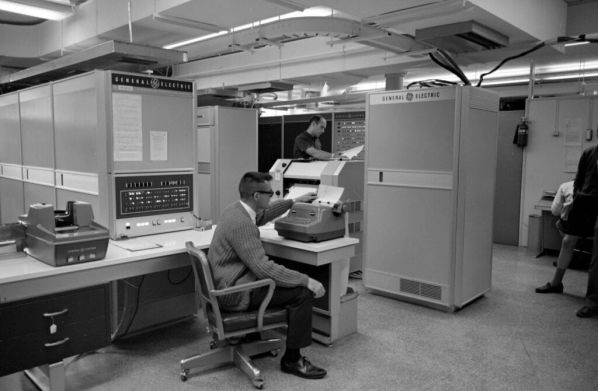Long before the advent of laptops and smartphones, he worked to make computers accessible to as many students as possible. His work helped launch generations into a new world.
Mathematician Thomas E. Kurtz, inventor of the simplified computer programming language known as BASIC, has died. It allowed students to use early computers and launched generations into the world of personal computers. He was 96 years old. The cause of his death was multiple organ failure caused by sepsis, Agnes Kurtz, his wife, announced.
In the early 1960s, before laptops and smartphones, a computer was the size of a car, and an institution like Dartmouth College, where Dr. Kurtz taught, there was only one. Programming was the job of scientists and mathematicians, professionals who knew the non-intuitive commands to operate these huge machines that sometimes spit out results after days or weeks. Dr. Kurtz and György János Kemeny (John G. Kemeny), the Hungarian-born chairman of Dartmouth’s mathematics department at the time, believed that students would become dependent on computers and would benefit from understanding how to use them.
“We had the crazy idea that our university students, who will later be employed in non-technical careers – social science and humanities students – should learn how to use a computer,” said Dr. Kurtz in an interview in 2014. The two mathematicians created the Dartmouth Time-Sharing System, which allowed multiple users to share the processing power of a single computer, replacing a system in which one person had to reserve time to use the computer and turn it in before the next person could use it.
Thomas Kurtz on the left, János Kemény on the right at Dartmouth College
“It was about making computers usable by all kinds of people who didn’t have a technical background,” John McGeachie, who helped build the Dartmouth Time-Sharing System, said in an interview. But building a system for sharing resources wasn’t enough. Dr. Kurtz and Dr. Kemény also wanted to make it easier for students to understand how computers work and to be able to code and run their own programs on Dartmouth’s computers I thought we could design a completely different way of using computers, which would allow us to provide computer education to hundreds of students,” recalled Dr. Hard Dr. To Kurtz’s words. Dr. Kemény called the proposal “radical”.
Later, the Budapest-born János Kemény became the 13th president of Dartmouth, and Dr. Together with Kurtz and university students, he worked on the development of BASIC, a beginner-friendly and intuitive computer language. The name stands for Beginner’s All-Purpose Symbolic Instruction Code. It was a high-level, easy-to-use programming language that could be used in conjunction with a time-sharing system. The language was simple. Entering the “RUN” command started the program. The “PRINT” command printed a word or string of letters. The “STOP” command stopped the program. At 4 a.m. on May 1, 1964, the time-sharing system and BASIC were tested in the basement of College Hall at Dartmouth University. A professor and a programming student typed a simple command – “RUN” – into adjacent teletype terminals and watched as they both received the same response at the same time. The thing worked.
Students could use other languages popular at the time, such as Algol and Fortran, but BASIC—which required only two one-hour seminars to learn the basics—became the language of choice not only for Dartmouth students but for people learning to program around the world. “If Fortran is the lingua franca, then it is certainly true that BASIC is the lingua playpen,” Dr. Kurtz once said. Also revolutionary was the ability of a computer to process the data of several users at the same time. It was even more daring that these same computer users could easily write their own programs.

“In the very early days, if you did something, the computer would just look back at you. BASIC was interactive. You knew him right away,” said Charles C. Palmer, head of Dartmouth’s computer science program. “That was the turning point.” This programming language provided the intellectual building blocks of later software, and is still a fundamental tool in the teaching of computer programming today. One student who later benefited from BASIC was Bill Gates, who used a version of it as the basis for the first Microsoft operating systems. Versions of BASIC still run computer operating systems today.
Thomas Eugene Kurtz was born in Oak Park, Illinois on February 22, 1928, graduated from Knox College in Galesburg in 1950, and received a master’s degree and a doctorate in statistics from Princeton. In 1956, the year he obtained his doctorate, Dr. Kemeny accepted him to Dartmouth’s mathematics department. He spent the rest of his career there in Hanover, New York. After graduating from Princeton, Dr. Kurtz recognized that there was greater opportunity for students to access computer programming outside of math and engineering. In 1951, he worked for a summer semester at the Institute for Numerical Analysis at the University of California, Los Angeles, before joining Dartmouth, working on time-sharing and accessible coding languages.
From 1966 to 1975, he was director of the Kiewit Computation Center at Dartmouth. In 1979, along with Stephen J. Garland, he established the Professional Master’s Program in Computer and Information Systems at Dartmouth, funded in part by a grant from IBM. “He knew it was hot,” Dr. Garland, a former student and colleague of his who helped standardize BASIC with the American National Standards Institute, said in an interview. “Now it’s called cloud computing.”
Source: sg.hu


